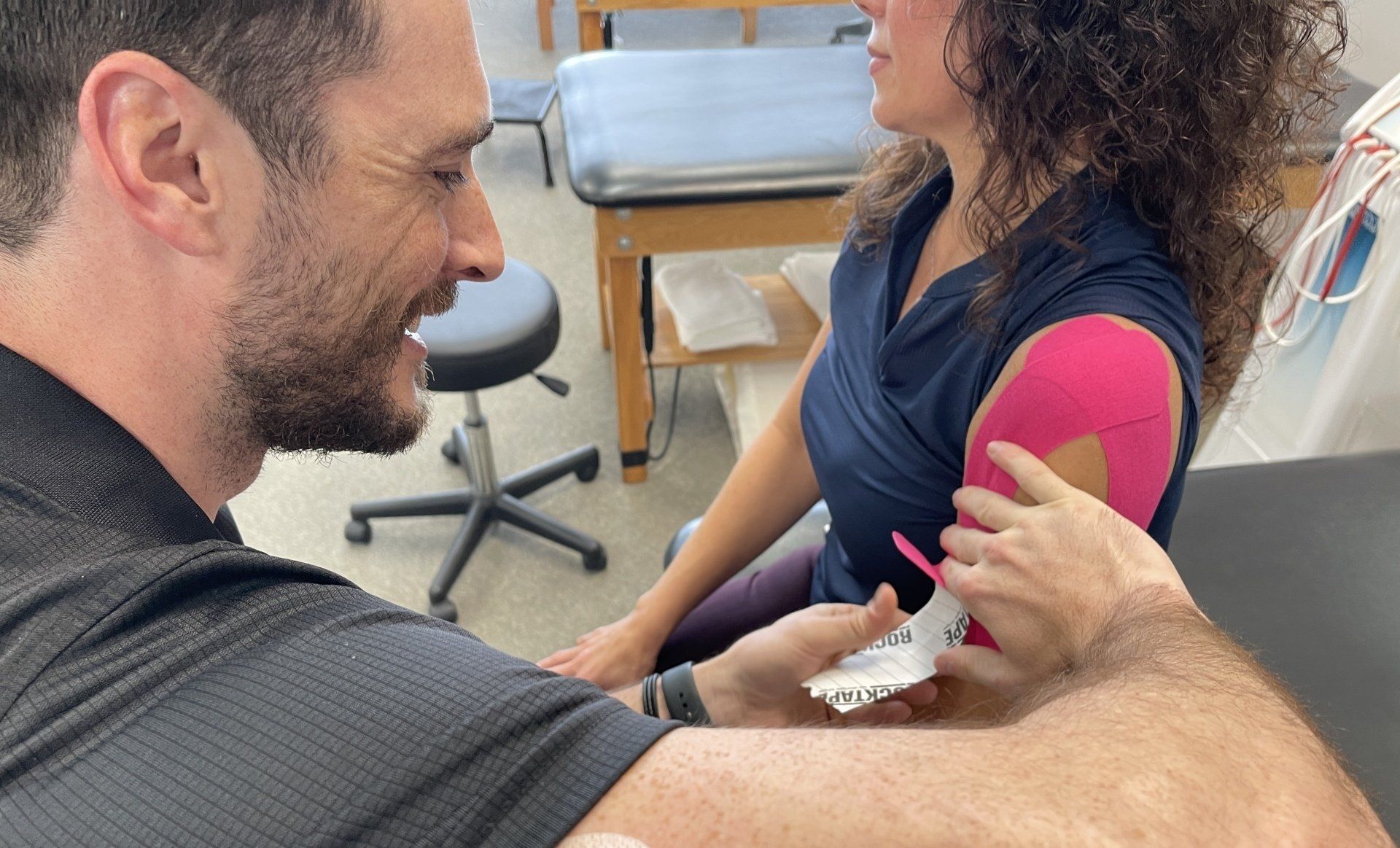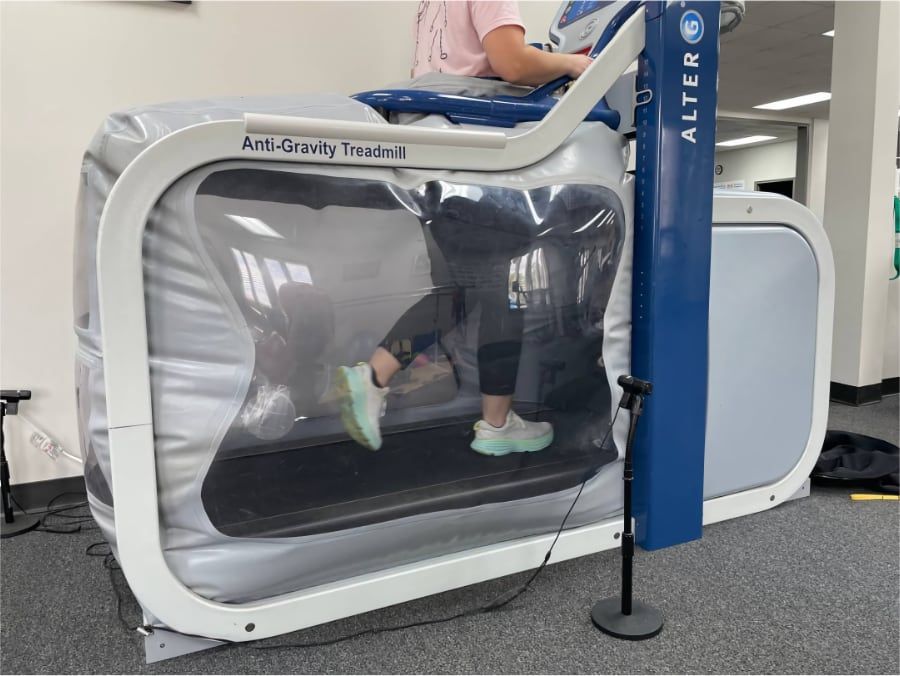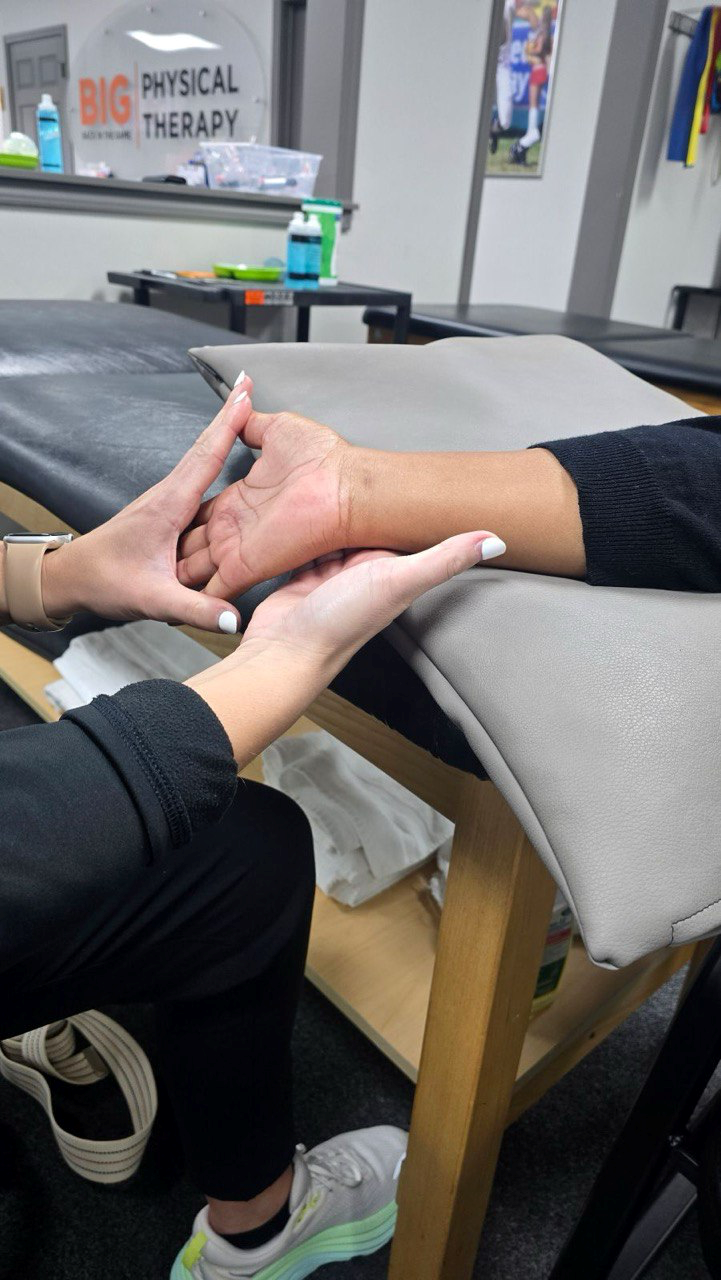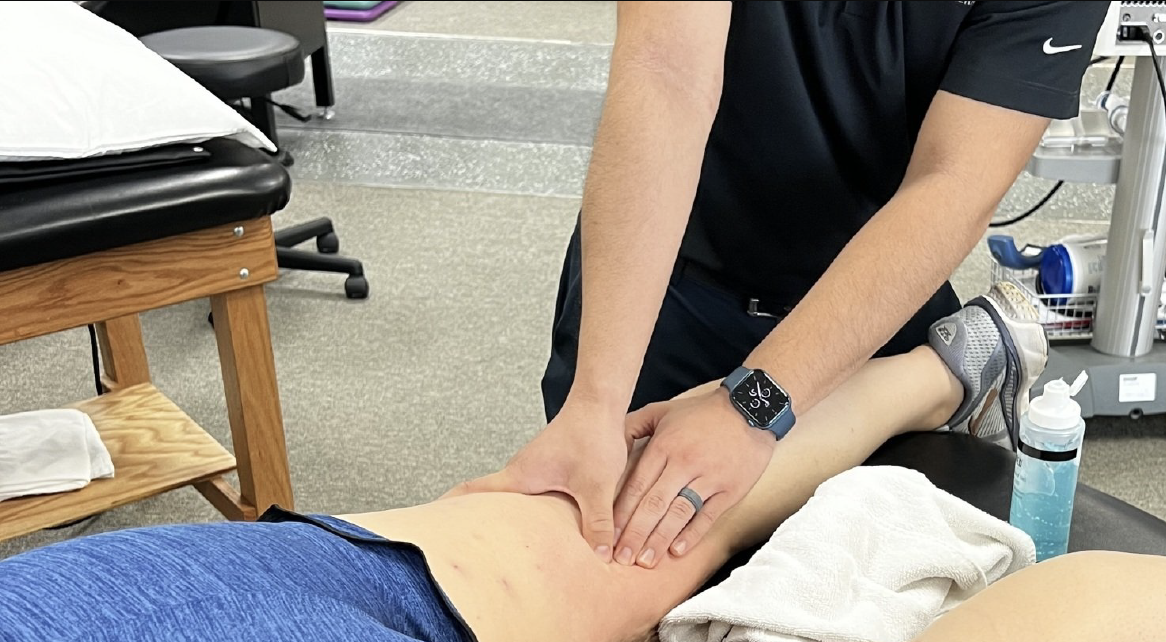Physical Therapy Services
Where Does It Hurt?
Who We Are
Resources
Frozen Shoulder During Menopause: What to Know
Written by: Back in the Game Physical Therapy

When you're a woman of a certain age, it's possible that you'll wake up one morning and it's hard, if not impossible, to move your shoulder. In this situation, it's entirely possible that you have an issue called frozen shoulder, which tends to happen most commonly in women aged 40-60, in individuals with diabetes or thyroid conditions, or those who have had recent shoulder surgery. But what is frozen shoulder, and what can be done to treat it?
What is a Frozen Shoulder?
A frozen shoulder is another term for adhesive capsulitis, frozen shoulder starts out as an injury that triggers cells that line your shoulder to produce proteins. Some of these proteins cause inflammation and pain, while others thicken the lining of the shoulder capsule, reducing range of motion. Over time, the pain will subside, but the shoulder joint remains stiff and motion is still limited. Eventually, range of motion can return, but it can take a frustratingly long amount of time to do so without treatment.
Signs & Symptoms of Frozen Shoulder
The main signs and symptoms you'll experience with a frozen shoulder are an injury that causes significant pain and limited range of motion. The pain is often higher than that of a rotator cuff injury, and should immediately be treated by icing the shoulder for 15 minutes, and then removing the ice for at least 15 minutes for the first 24-48 hours. After this, heat can be used to increase blood flow and motion. However, if the pain abates and the limited range of motion remains, it's time to seek professional help for a frozen shoulder.
Is Frozen Shoulder Common During Menopause?
It is much more common for women to develop frozen shoulder during their menopause years, mainly due to the rapid shift of hormones, especially anti-inflammatory and joint-protective estrogen, during this time. This is partially due to several hormone-disrupting diseases that can exacerbate the issue at this time, including diabetes, thyroid disease, Parkinson's disease, autoimmune disorders, and similar issues. Surgery can also cause a frozen shoulder to occur, as the tissues around the shoulder respond to surgical trauma, such as from a joint replacement.
How to Treat Frozen Shoulder
As mentioned above, there are a few initial treatments you can undertake if you have a shoulder injury to reduce the possibility of a frozen shoulder, including cold and heat therapy, as well as the use of anti-inflammatory medications such as ibuprofen, naproxen sodium, or aspirin. Practicing gentle range of motion frozen shoulder exercises can also reduce your risk of developing a frozen shoulder, as it will prevent the muscles from forming adhesions and similar scar tissues. However, there are a number of therapies that can also help with your healing process.
Physical Therapy
Physical therapy is often used in conjunction with other complementary therapies such as hydrodilatation, massage therapy, dynamic dry needling, manual therapy, and frozen shoulder exercises. This process is used to stretch the shoulder joint capsule and prevent it from locking up again through range of motion exercises, stretches, therapies, and medical treatments. These processes will stretch the existing tissue while preventing new adhesions from forming, focused on keeping the issues causing the frozen shoulder from returning.
Dry Needling
Similar to acupuncture used in traditional Chinese medicine but with a western medical approach, dry needling reduces the pain of a frozen shoulder by introducing a thin, sterile, one-use needle or needles into the area to stimulate pain control in particular parts of the brain. It's almost always used as one component of a multi-faceted approach to pain management and physical therapy, helping you get effective pain control while you're undergoing physical therapy treatments and keeping you as comfortable as possible.
Hydrodilatation
In many cases, hydrodilatation is a helpful therapy. Using ultrasound or similar techniques to guide a needle for an injection of hydrocortisone, local anesthetic, and saline into the shoulder joint capsule, this injection will reduce inflammation and promote the healing process. It's commonly used with physical therapy to return full range of motion to the shoulder joint, with physical therapy following for several days to a week after injection.
Manual Therapy
As compared to physical therapy, which typically includes a wide range of complementary treatments that help to heal your frozen shoulder, manual therapy is the stretching and movement of the shoulder joint itself at various points in the treatment and healing process. Beyond simple stretching, it includes a range of techniques that also improve blood flow and circulation in the shoulder, reduce pain and inflammation, and increase range of motion. Following this treatment, you may be assigned frozen shoulder exercises to retain flexibility.
Will I Need Surgery for Frozen Shoulder?
If your shoulder is still stiff following a first round of hydrodilatation and physical therapy, a second round is typically prescribed to continue improving your range of motion. However, in a few cases, your shoulder may not respond well to these treatments, and surgery may become an option. During this process, which can be done under regional anesthesia while awake, a small opening is made to access the shoulder joint, at which time small cuts are made to reduce the adhesions causing the frozen shoulder. Even under general anesthesia, this type of surgery is typically handled as an outpatient surgery, allowing you to return home the same day.
Visit Us for Specialized Frozen Shoulder Treatment
Though you may not have been familiar with the link to frozen shoulder menopause impacted women can almost always get through the process of freeing up their frozen shoulder through relatively simple treatments at a physical therapist's office. At
Back in the Game Physical Therapy, your range of motion and ability to function at a lower pain level is always our top priority, and we'll focus on getting you back to normal as quickly as possible. If you're ready to get past your frozen shoulder and back to your regular lifestyle, why not
request an appointment now?
Contact
Request an appointment





